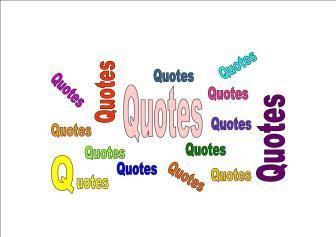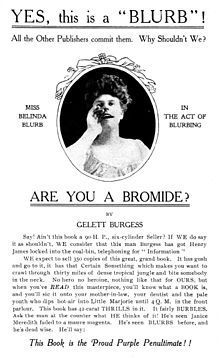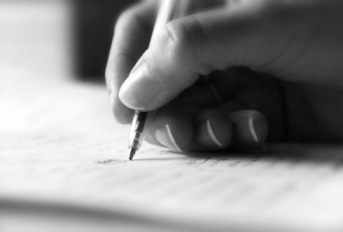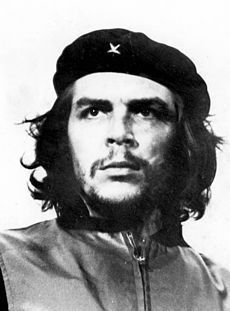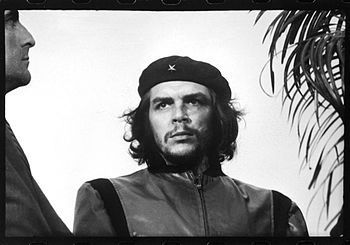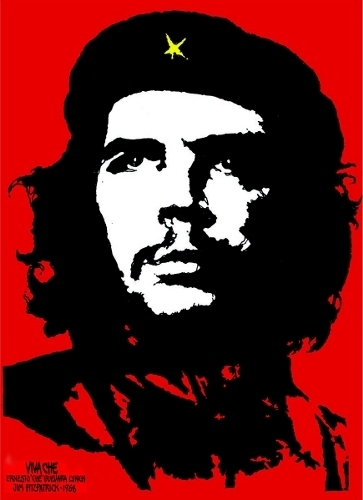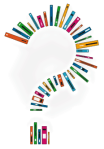Louise M.H. Miller's Blog, page 19
April 24, 2013
What to read………next?
I’m rarely stumped about what to read. The question that really drives me and sticks in my mind is always, what to read next? As my proverbial ‘to read’ list gets longer and longer, as I’m discovering new books and new authors out there that I haven’t read yet, mingled in with books from a series that I’m slowly working through, the decision as to what to read next becomes ever more increasingly difficult.
I always have plenty of series books to keep me going, from Bernard Cornwell’s Sharpe series to Jean M Auel Earth Children series.
And there are also books that I’ve read in the past that I’m dying to give another go. More books/authors get discovered, more books get recommended, and the books on my shelves and on my list increase. How to decide?
I’m also planning on an Indie book-read month (or two), where I solely devote my reading to those self-published works.
On top of this, I’m always on the lookout for new reads and new authors.
So dare I ask? Any recommendations?
Filed under: Uncategorized Tagged: book recommendations, book shelves, books, reading, reading list, writing series


April 22, 2013
Should I have read…..The Quotes…
Back on the 1st March I posted a blog listing a collection of authors – not necessarily books – that I feel should be read. Some of the listed I had read and some I hadn’t. These last two months I have spent my reading leisure time rectifying this. From this reading list I have read the following.
I decided not to do reviews of the following authors/books, but instead give you a choice quote from each.
1. (a) Ian Fleming.
“You are right. Mister Bond. That is just what I am, a manic. All the greatest men are maniacs. They are possessed by a mania which drives them forward towards their goal. The great scientists, the philosophers, the religious leaders – all maniacs.”
- Dr No.
2. (b) Agatha Christie.
“The impossible could not have happened, therefore the impossible must be possible in spite of appearances.”
- Murder on the Orient Express.
3. (f) Charles Dickens.
“Out of my thoughts! You are part of my existence, part of myself. You have been in every line I have ever read, since I first came here, the rough common boy whose poor heart you wounded even then. You have been in every prospect I have ever seen since – on the river, on the sails of the ships, on the marshes, in the clouds, in the light, in the darkness, in the wind, in the woods, in the sea, in the streets. You have been the embodiment of every graceful fancy that my mind has ever become acquainted with.”
- Great Expectations.
4. (m) Philip K Dick.
“Once, he thought, I would have seen the stars. Years ago. But now it’s only the dust; no one has seen a star in years, at least not from Earth. Maybe I’ll go where I can see stars, he said to himself as the car gained velocity and altitude; it headed away from San Francisco, toward the uninhabited desolation to the north. To the place where no living thing would go. Not unless it felt that the end had come.”
- Do Androids Dream of Electric Sheep?
5. (o) P.G. Wodehouse.
“Jeeves, you really are a specific dream-rabbit.”
“Thank you, miss. I am glad to have given satisfaction.”
- The Code of the Woosters.
More to follow as I keep on reading the authors down the list!
Filed under: Uncategorized Tagged: authors, must reads, quotes, reading


April 10, 2013
Writing a blurb? – Some key tips!
Writing a blurb can be terribly daunting. Some can approach it with the same trepidation as a synopsis. How can you condense your work down to a single page (for a synopsis) or even worse to a single paragraph for a blurb?
But a blurb is just a few sentences to wet the prospective reader’s interest to ultimately and hopefully buy your book!
- Keep it short, concise and most importantly interesting
After looking at your book’s front cover, if they’re initially interested the reader – and buyer – will be drawn next to your blurb. But keep it tight and enticing. It’ll probably be the blurb that they clinch the deal for them. Start by jotting down the general gist of what your story is about. Try to keep it to a bare minimum but at the early stage it doesn’t matter too much about word count. Once you have the general gist then you can tinker with the words and phrases. Playing about with the content of your blurb, cutting, editing and cutting some more until you’re happy with the outcome.
- Again keep it short
I’ve repeated myself here, but it is important. Look on the backs of other books and you’ll see that you have a very limited amount of space. And what’s more most readers will probably on average spend only a few seconds reading your blurb and in the same few seconds will make a split second decision whether to follow through and buy your book. So make every second count by keeping it short. Make the paragraph short and sweet. It helps to make the sentences themselves short and snappy to keep it short and liven the pace. Keep it pithy! (Oh lord, how many ‘short’s’ have I used?)
- Do some research
It’s very helpful – and may sound obvious – to read other books blurbs. Browse in a book store or on internet sites and read blurbs. This will give you an idea of pace, length and rhythm of your blurb.
- Read it out loud
To yourself, to others, to anyone who will listen. It’ll be good practice when someone asks you what your novel/book is about. It’s at this stage, reading it aloud, when you hear what works and what doesn’t.
- Pass it on to others
Getting others to read it – especially ones who know nothing about your book/novel/plot – will be immensely helpful. You know your own story backwards and inside out. Every detail. Every plot twist. You understand the very basic premises of your work, but others don’t. It’s good to get others to read it to see if the blurb actually makes sense as well as being well-written and enticing.
- Don’t rush it
Don’t rush it. Don’t forget about it until the last minute. Don’t write it in a hurry and hope for the best. You’ve spent all that hard work, dedication and effort into writing the damn thing, so use the same momentum in your blurb or run the risk of being left behind in the ether of countless thousands on the internet. Wouldn’t it be a disappointment to have wasted all that effort? Make a point of sitting down to write it. It’s important. Your blurb is a key stepping stone towards the ultimate selling of your book.
- Still struggling?
A lot of writers get the blurb started by adding a ‘tag-line’ after the title. Movies do it all the time. Books are doing it too. It’s a great way to start, and if you use the right phrase – maybe even a question – it might make the prospective reader read on. The same technique could be used to finish off the blurb. A clear start – or end – may make it easier for you to write the rest of the blurb.
- Proofread!!!
Make sure it’s perfectly proofread. Spelling, grammar, punctuation….. All needs to be PERFECT.
- Formatting
Especially poignant if you’re self-publishing. You’ll have to think about font, size and style of the text, including where exactly it’ll sit on the page, even down to the colour. It needs to be legible.
A blurb is a promotional description, one full of praise. Remember this. Have fun in creating your blurb. It’s all part of the process of writing.
Filed under: Uncategorized Tagged: blurbs, Writer, writing, writing a blurb, writing advice, writing tips


April 8, 2013
A new change in my life…. (Update)
I’ve not put up a new post onto my blog lately. I’ve recently started a new job as Library Manager up a newly re-opened community-run library and I’ve had my hands – and my mind full – with getting everything up and running. And now all that’s left is to develop a new routine for writing and for my blog around my new job.
It’s a job share position working one week on, one week off, so it’s obvious that on my week off I can do some serious writing and get back to my usual writing routine, but I need to get back to grips with developing a routine when I’m at work.
The first week at work I did very little in terms of writing and social networking as an author because of all the changes but subsequent weeks I need to force myself to do something, methinks.
So, for a time my blog updates may be a little more erratic than usual, but I haven’t abandoned my blog or my writing.
Filed under: Uncategorized Tagged: Library, networking, new job, writing, writing routines


March 26, 2013
Google Maps – a tool for writers?
Is it a useful tool for writers?
[This is not an advertisement for Google, just a quick thought about writing.]
I use it quite a lot when I’ve got to visit a new place – not just for writing. Dragging the icon down to street level makes it easier to navigate without having to remember street name after street name. But can it be more than that?
Sure looking at pictures and maps of a place doesn’t give you the full feel of the place. It doesn’t include sounds or smells – at least not yet anyway – with the way technology is improving we may never have to leave our homes to visit a new place!
But to get a general sense of the layout of a place it can be a useful tool. For some scenes and for some writers location is very important and integral to the story. Especially if you’re writing about a real place. If the post office is next to the local pub, whether there’s a roundabout in the middle of the village. A cemetery? A church or a chapel? Even what high street stores there are there? Or how the river flows? Does it bubble gently over smooth rocks or does it foam down a series of mini waterfalls? Then Google Maps is a useful tool.
[I've used it to calculate distances from place to place and how long it'll take to get from A to B.]
It shouldn’t replace actually visiting the place. You can’t get a true feel for the place by looking at a picture. And nothing can really beat visiting the place, wandering about its streets, smelling the sounds and seeing all the sights in real-time around you. Nor can you talk to the people who live there. But can it be used as a memory refreshment tool?
Should it be used at all? I think that’s it probably alright to use it – but not as a template for your imagination or physical research, but more as a guide or memory jogger. Or even to give you a brief sense of what a place looks like to spark your imagination forward, to make the creation of a fiction town, city or village all the more easier to create.
It is a tool for the creation of imagination. Not the be all and end all. But does this mean it shouldn’t be used?
Filed under: Uncategorized Tagged: building scenes, Google, Google Maps, writing, writing tools


March 18, 2013
1893 – Birth of British poet, Wilfred Owen.
120 years ago today,one of the best known war poets was born. Wilfred Owen is known today for his shocking and realistic war poetry of the First World War. He joined the war effort as a soldier, spending some time in hospital for shell shock. His meeting with Siegfried Sassoon had a profound impact upon him and his work. Writing poetry from an early age, some report as early as 10, he had determined on a poet as his career. He was deeply influenced by Keats and Shelley. Unfortunately, he never got to see his dream realised.
He was killed in November 1918, aged only 25, just one week before the Armistice. Only five of his poems were published during his lifetime, but he is remembered today due to others, including Siegfried Sassoon and Edith Sitwell, who edited his poems and published them posthumously in Poems (1920), The Poems of Wilfred Owen (1931), and The Collected Poems of Wilfred Owen (1963).
He used his terrifying experiences in France, and used his conflicts in returning to the Western Front in his poems, which relieve the overwhelming affects the war had on him, telling his readers of the pity, devastation and the bleakness of war, rather than the might and majesty portrayed back home in propaganda. His poems provide a future generation with a warning against war.
In many of his poems he highlights a surreal quality to the experiences of war. His ‘characters’ dream and hallucinate in their extreme fatigue, dropping in and out of consciousness, through lack of sleep, food or loss of blood through injuries. Some have argued that this technique makes the true horror of war more realistic, more universal, because there seems to be no rational explanation for the events of war.
Among his best-known works – most of which were published posthumously – are “Dulce et Decorum Est”, “Insensibility”, “Anthem for Doomed Youth”, “Futility” and “Strange Meeting”.
Anthem for Doomed Youth
What passing-bells for these who die as cattle?
Only the monstrous anger of the guns.
Only the stuttering rifles’ rapid rattle
Can patter out their hasty orisons.
No mockeries now for them; no prayers nor bells,
Nor any voice of mourning save the choirs,—
The shrill, demented choirs of wailing shells;
And bugles calling for them from sad shires.
What candles may be held to speed them all?
Not in the hands of boys, but in their eyes
Shall shine the holy glimmers of good-byes.
The pallor of girls’ brows shall be their pall;
Their flowers the tenderness of patient minds,
And each slow dusk a drawing-down of blinds.
Dulce et Decorum Est
Bent double, like old beggars under sacks,
Knock-kneed, coughing like hags, we cursed through sludge,
Till on the haunting flares we turned out backs,
And towards our distant rest began to trudge.
Men marched asleep. Many had lost their boots,
But limped on, blood-shod. All went lame, all blind;
Drunk with fatigue; deaf even to the hoots
Of gas-shells dropping softly behind.
Gas! GAS! Quick, boys!–An ecstasy of fumbling
Fitting the clumsy helmets just in time,
But someone still was yelling out and stumbling
And flound’ring like a man in fire or lime.–
Dim through the misty panes and thick green light,
As under a green sea, I saw him drowning.
In all my dreams before my helpless sight
He plunges at me, guttering, choking, drowning.
If in some smothering dreams, you too could pace
Behind the wagon that we flung him in,
And watch the white eyes writhing in his face,
His hanging face, like a devil’s sick of sin,
If you could hear, at every jolt, the blood
Come gargling from the froth-corrupted lungs
Bitter as the cud
Of vile, incurable sores on innocent tongues,–
My friend, you would not tell with such high zest
To children ardent for some desperate glory,
The old Lie: Dulce et decorum est
Pro patria mori.
Filed under: Uncategorized Tagged: First World War, poem, poetry, Siegfried Sassoon, war poetry, Western Front, Wilfred Owen


March 13, 2013
Establishing a writing routine….
Back in October 2012 I wrote a post on the importance of developing a writing routine, in which I stated that, with work and travelling to and from work, I had little balance of time to do what writing I wanted. By balance, I mean having the same set number of days or hours in a day in which I can establish a ‘true’ writing routine. But now, I think I have come to realise that it’s ok if one day to the next I don’t follow the ‘full’ writing routine I want to put in place, as long as I do something. As long as a day (weekday) doesn’t pass where I don’t do anything.
This can be from concentrating one day just on developing my online presence and social networking to writing all day. I have come to trust in myself to make the right decision over what needs to be done – and what can be done in the time allowed for that day. I also try to stay calm and relaxed and take one day at a time. If on Day 1 I didn’t do any actual writing then I don’t let myself get stressed out and I always look forward to the next day.
I think, therefore, that I’ve developed two writing routines.
Whenever I’m working I:
Either,
Do a little bit of writing
Novel planning
Social networking – on twitter, my blog, hootsuite, GoodReads or Authonomy…
Research
Or just reading what others have written – either on other blogs, on twitter feeds, or on authonomy
On ‘working’ days I just choose one – or two – from the above and do that something. Anything. To keep my writing mind active and my online presence felt. Whether it’s before work, during lunch or on the journey home (don’t worry I get the train).
When I’m at home and have the day to write I have a more established writing routine.
Am; I, briefly, social network. I update my blog. Answer any emails. Respond to any comments. I tie up any loose administrative ends.
Am-Pm; the main body of the day is taken up by writing; research, writing or editing depending at what stay of the process my book is at.
Pm; To finish the day, I return to social networking. But on a more detailed basis, building relationships with writers and readers online, following other blogs, catching up with what’s new, spending time reading, networking and building relationships on authonomy.com and goodreads.com.
[Done towards the end of the day, it won't cut into that valuable writing time.]
Pm; To ‘wind’ down I read a good book.
Then comes the usual daily routine that everyone shares – the cooking and the cleaning….
In the past I have made the mistake of trying to tag these points above of a ‘regular’ writing routine to times in the day, and I think that’s where I was going wrong. As long as my routine is followed in the above order than I can worry less about what actual time it is and focus on the task at hand, and as long as the main body of the day is spent writing, I’m happy. Without having to keep a constant eye on the time, I can let myself relax a bit and concentrate on what I really love – writing.
[Saying that sometimes I look at the clock and wonder where on earth the time has gone. But that's normal I'm sure.....]
Filed under: Uncategorized Tagged: procrastinating, social networking, writing, writing routine


March 5, 2013
“That” iconic image – Che Guevara as the Guerrillero Heroico
On this Day (5th March) in 1960 - The Cuban photographer, Alberto Korda took his iconic photograph of Marxist revolutionary Che Guevara, in Havana, Cuba at a memorial service for the victims of La Coubre explosion.
Alberto Korda said that he was drawn to photograph Che Guevara at that particular moment because his facial expression showed ‘absolute implacability’ as well as anger and pain.
The Maryland Institute of Art has called it a symbol of the 20th century and the world’s most famous photograph. The photograph, called Guerrillero Heroico (Heroic Guerrilla Fighter), has re-appeared many times and has been copied, printed, digitized, embroidered or sketched on nearly every material and surface.
The Victoria and Albert Museum said that it is one of the most re-produced images of all time.
Jonathan Green, director of the UCR/California Museum of Photography, has speculated that “Korda’s image has worked its way into languages around the world. It has become an alpha-numeric symbol, a hieroglyph, an instant symbol. It mysteriously reappears whenever there’s a conflict. There isn’t anything else in history that serves in this way”
It is quite simply one of the most famous images in history and appears throughout the world. Not many people haven’t seen this man’s face. Associated ultimately with revolution and rebellion, this symbol is often now linked to art and popular culture, however it is still used today as a political statement in rallies and riots. It has appeared on t-shirts and posters, I have even seen a poster of this iconic photograph in bars and restaurants.
It is the ultimate symbol of Marxism. Today, the symbol of the image has become somewhat diluted as it filters down into modern popular culture, but the image still remains to this day, and will remain for years yet to come, truly iconic.
Below shows the original photograph taken by Korda, which was later cropped by him (after Che’s death) to remove the second man and the palm tree and rotated slightly to give us the image we are now familiar with today, which gave the portrait ‘an ageless quality, divorced from the specifics of time and place.’
By Banksy
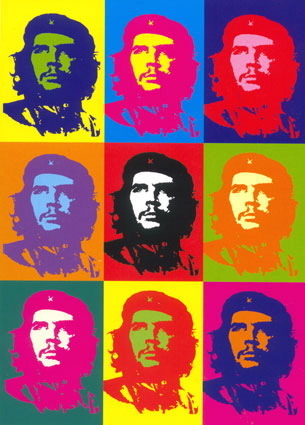
By Andy Warhol
The famous poster stylized by Jim Fitzpatrick in 1968.
Filed under: Uncategorized Tagged: Alberto Korda, Che Guevara, Cuba, Guerrillero Heroico, iconic art, Marxism, photography


March 1, 2013
Should I have read…?
As an avid reader and a writer there are some books I feel that I ‘should have’ read. The times when someone asks ‘have you read anything by ‘so-and-so” and I have to cringe-worthily say ‘no’. So to avoid future embarrassment on my part, I’ve had a good think about authors – not necessarily books – that I feel should be read. I’m not talking reading everything they’ve ever written but, just reading something by them. I written down a list for you, in no particular order….
I haven’t included every author that I fancy reading. I’m sure – and know that there are dozens I’ve missed off the list. But I’ve narrowed it down to 26. Some of them I have already read, some I haven’t. I also haven’t included all the ‘classics’ writers – that’ll make up a very comprehensive list of its own if I did. Instead, I’ve tried to chose from different eras from the classics to modern greats to modern man-booker prize winners.
So what are they…?
a) Ian Fleming
b) Agatha Christie
c) Either Charlotte or Emily Brontë (I know this can count as two – but I feel I should have at least read a book by one of them)
d) Jane Austen
e) William Shakespeare
f) Charles Dickens
g) Bernard Cornwell
h) Ernest Hemingway
i) George Orwell
j) Sylvia Plath
k) Hilary Mantell
l) Arthur C. Clarke
m) Philip K. Dick
n) JRR Tolkien
o) P G Wodehouse
p) Jules Verne
q) Stephen King
r) Ken Follett
s) Virginia Woolf
t) Salman Rushdie
u) Doris Lessing
v) Oscar Wilde
w) Leo Tolstoy
x) Arthur Conan Doyle
y) James Joyce
z) Aldous Huxley
How many have you read?
Do you have any others you can think of that ‘must’ be read – again authors in general, not specific books?
Filed under: Uncategorized Tagged: classics, fiction, great writers, man booker prize, reading, reading list


February 25, 2013
The Oscars: movie versus novel?
So the Oscars have been and gone again and those deserving few have scooped the prizes. But looking down the list of winners, and not just for this year, time after time, films fall back upon books to make the film and win it some Oscars;
Life of pi by Yann Martel
Anna Karenina by Leo Tolstoy
Silver Linings Playbook by Matthew Quick
Les Misérables by Victor Hugo
It seems, and I’m not complaining, that novels, no matter how far in the past they were published still provide directors, actors and audiences with movies.
It is every authors dream (or at least the vast majority) to see their work translated onto the big screen.
This sparks the age-old debate as to whether to read the book before seeing the movie or indeed whether to read the book at all. I must admit that I’ve heard it all too often, and it’s like swearing to my ears, when someone dismisses reading a book, merely stating instead that ‘I’ll wait for the film’.
But as an avid reader and a writer, I cannot stress more the enjoyment you can get from reading the book first. Some things in novels don’t translate very easily to the big screen, and huge chunks of the novel can be cut during the film making process. The novels provide you with a fuller picture of the stories and the characters that films, no matter how brilliant, can only begin to touch upon.
Watching a film first can distort your opinion of how a character should look, talk and move. It can alter your sense of perception to the scenery and the costumes, even the whole feel of the novel can be altered (it can also be accentuated if the film is truly excellent).
But for directors and screen-writers is it that well-written books, already popular in their own way, are good fall-back options when created a movie, is it that great writing has already been made, great characters already been created, great places and great times, that it is sometimes impossible not to resist them and translate them to the big screen. What makes novels so appealing to be made into movies?
Here’s a quick list from me for books to be read before you watch the film:
The Lord of the Rings (trilogy) (naturally) by JRR Tolkien
The Hobbit by JRR Tolkien
The Shining by Stephen King (or any others by Stephen King..Misery, Carrie, The Green Mile….etc.)
Silence of the Lambs by Thomas Harris
Frankenstein by Mary Shelley
Dracula by Bram Stoker
Nineteen-Eighty Four by George Orwell
All Quiet on the Western Front by Erich Maria Remarque
American Psycho by Bret Easton Ellis
Jane Eyre by Charlotte Brontë
Filed under: Uncategorized Tagged: anna karenina, films, Les miserables, life of pi, novels, oscars, silver linings playbook


Louise M.H. Miller's Blog
- Louise M.H. Miller's profile
- 18 followers



